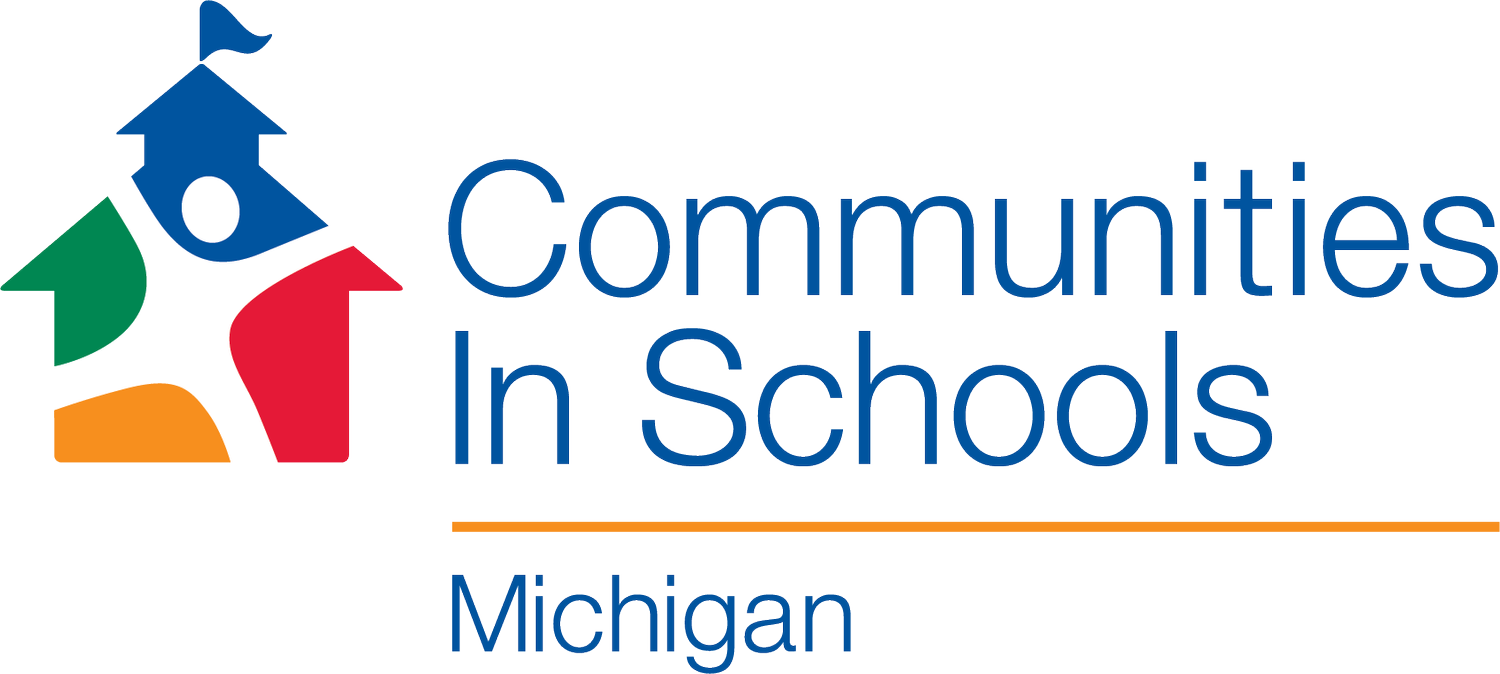
Strategic Plan
2025-2030
Tagline?
Mallory DePrekel, CIS of Michigan CEO
“It all begins with an idea. Maybe you want to launch a business. Maybe you want to turn a hobby into something more. Or maybe you have a creative project to share with the world. Whatever it is, the way you tell your story online can make all the difference.”
Who We Are
Communities In Schools of Michigan is part of the national CIS network, working to ensure every student has what they need to succeed in school and beyond. We operate inside 62 schools across Michigan, connecting students to caring adults, resources, and community support to overcome barriers and build brighter futures.
Join us in creating lasting change for Michigan students.
-
Our Mission
Communities In Schools of Michigan surrounds students with a community of support, empowering them to stay in school and achieve in life.
-
Our Vision
Communities In Schools of Michigan envisions all students having a supportive community that fosters academic and personal growth, empowering them to thrive and define their own success
-
Our North Star
Communities In Schools fuels personal potential, so every student can take charge of their story and define their success for life.
Our Strategic Priorities
-
Create adaptable and structured tool kits and high-quality curricula based on our data and evidence-based practices
Define, scale, and identify signature programs and student supports
Enhance partnerships with schools and community organizations
Strengthen relations with key local partners and collaborate for student impact and sustainability
Partner with agencies to fill gaps in desired skills and services for students
Further build connections with larger community support systems (referrals)
Standardize evidence-based decision-making
Social emotional learning and mental health assessments (clinical work)
Aligning programs with school support plans and needs assessments
Establish routine practices that foster a deeper awareness and understanding of the communities and students we serve
Address rising needs of students
Student readiness for life after graduation
Enhance youth exploration of their futures as a component of case-management
Key Indicators
District retention, increased graduation and promotion rates, number of evidence-based partners, increase in social emotional learning development for case-managed students, completion rate of a post-secondary plan, evaluation of effectiveness of case management from school to school, and graduation from case management, partnership retention, new partnership development, and partner utilization
-
Communicate student outcomes addressed by our portfolio of signature programs
Increase brand recognition across the state
Strengthening district relationships across schools, district administration, board members, families, and community partners
Build out relationships with local, state, and federal government stakeholders
Increase investment in marketing and public relations
Increase statewide awareness of CIS with school districts that are not partners
Expand network of champions for CIS of Michigan
Raise the profile of CIS of Michigan as experts of the integrated student support model
Proactively market CIS of Michigan in communities through boards, coalitions, task forces, associations, and community partnership meetings.
Showcase impact continually and in diverse ways
Key Indicators
Increased media coverage, consistent presence on district platforms, district retention, rate of public speaking, increased PR opportunities across sectors, ISS written into legislation or satisfying state requirements
-
Implement innovative, effective, and sustainable fundraising strategies
Community-centered and ethically grounded approaches to stakeholder stewardship and fundraising
Develop effective strategies to engage philanthropic partners
Diversify funding streams
Create robust plans for the future
Succession planning across the organization
Contingency planning
Managing financial risk & utilizing cost analysis process
Implement user-friendly financial systems
Develop smart expansion criteria
Significant percentage of community commitment
Long-term commitment from prospective districts
Sustainable funding model
Key Indicators
Donor retention and giving levels, percentage of restricted vs. unrestricted funding, number of new donors and philanthropic partners, braided funding percentages, and donor touch points
-
Provide wages that allow staff to thrive
Establish a pay band, progression process, or merit cycle
Greater support for staff’s professional growth
Establish comprehensive training pathways with a whole-person approach
Scale best practices in training
Increase staff recognition and connection across the state
Train the trainer model and peer mentorship
Strengthen structure & processes that provide training, support and accountability
Formalized staff site visits
Implement stay interviews
Increase transparency and quality communications practices
Key Indicators
Salary increases yearly, staff satisfaction surveys, dollars budgeted for training, staff retention, increased staff representation, greater sense of belonging, increased feedback, staff satisfaction surveys, staff promotion rate, increased staff retention/lower turnover rate, training feedback, employee value and engagement score, and track utilization of clinical team
-
Conduct advocacy to raise awareness of student needs.
Join coalitions and build partnerships that work towards solutions that work for any student in every community
Work towards changing social conditions at the root cause of issues keeping students from succeeding in school
Develop content expertise on chronic absenteeism and implement strategies to reduce absences
Key Indicators
Number of coalitions joined, number of legislative site visits, number of times CISM staff present at conferences, increased legislative funding for preK-12, community data on student access to services, and reduced truancy rates


